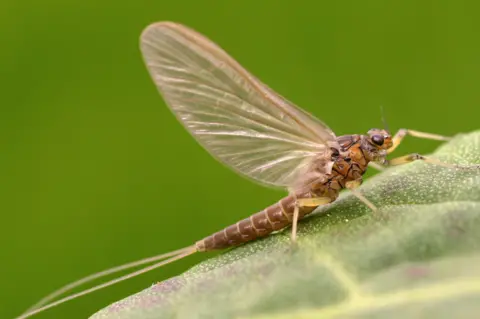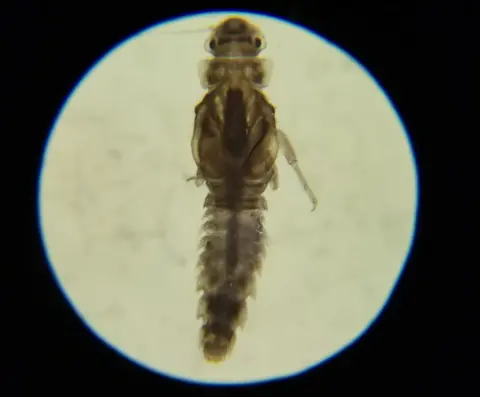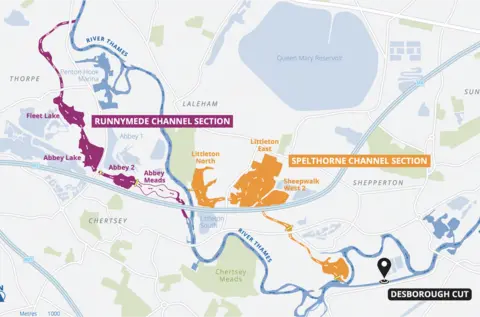River Thames: Rare species found as flood defences considered
 River Thames Scheme
River Thames SchemeAn extremely rare UK discovery has been made at Walton Bridge on the River Thames.
It is the mayfly Caenis beskidensis and hasn't been seen in the UK for 49 years.
It was discovered as part of the early works of the River Thames Scheme which authorities hope is going to transform parts of Surrey and south-west London.
The River Thames between Egham and Teddington is one of the largest areas of undefended, floodplains in England.
There are about 11,000 homes and 1,600 businesses and as the area found out in 2014, it is vulnerable to extreme flooding.
Then, the Thames burst its banks and whole communities were submerged in water. It was devastating for many.
 River Thames Scheme
River Thames SchemeNow eight years later, the authorities hope they have come up with a solution.
It is called the River Thames Scheme and what it does is create two huge water channels that flood water can be diverted into.
The channels essentially link up existing lakes which can be used as capacity for flood water.
 River Thames Scheme
River Thames SchemeWith a warming climate, scientists think extreme weather and flash flooding will become more common and so these schemes are even more essential.
The authorities hope that they will also create green, biodiverse habitats and give local people access to green space.
A public consultation on the £500m scheme is open until 20 December.

Follow BBC London on Facebook, Twitter and Instagram. Send your story ideas to [email protected]
